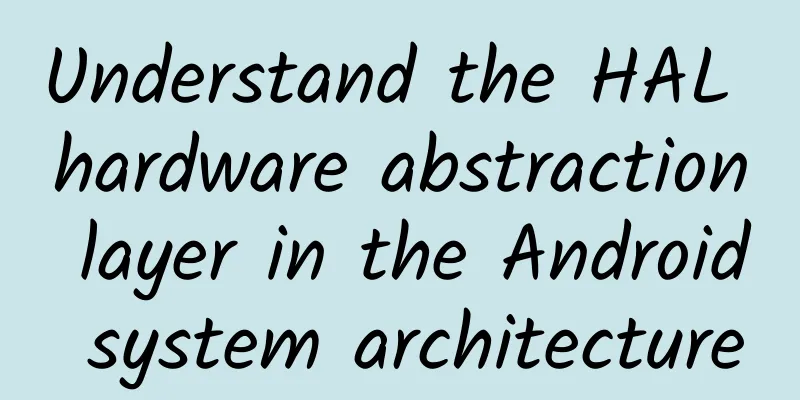Understand the HAL hardware abstraction layer in the Android system architecture

Introduction to HALHAL refers to the Hardware Abstraction Layer, which is an abstract interface between the operating system and the hardware. The function of HAL is to abstract the functions of the hardware into a unified interface so that the upper-level software can access the hardware by calling these interfaces without having to care about the details of the specific hardware. In the Android system , the existence of HAL allows hardware from different manufacturers to be uniformly called by upper-level applications, thereby improving the compatibility and portability of the system. HAL can also help developers develop applications more conveniently, because they do not need to write different drivers for different hardware, but can access the hardware by calling the unified HAL interface. Android's HAL plays an extremely important role, making the Android system more flexible and extensible. System Architecture
The entire architecture is shown in the figure below: picture This architecture makes the Android system scalable and flexible, while also providing developers with a wealth of APIs and tools to develop various types of applications. HAL layer exampleSuppose we want to implement a simple HAL layer interface for a sensor device: This is a simple HAL layer interface example for a sensor device, which defines the structure of the sensor module and the sensor polling device, and contains function pointers for activating sensors, setting delays, and polling sensor data. In actual HAL layer development, it is also necessary to implement the specific function codes corresponding to these function pointers and register them with the hardware module of the HAL layer. The above is a simple example to demonstrate how to define the HAL layer interface of the sensor device. In actual development, it is necessary to define and implement the corresponding interface according to the specific hardware device and function. |
>>: Let's talk about the use of RemoteViews in Android applications
Recommend
TikTok's fortunes take a turn for the better as Trump supports partnerships with Oracle and Walmart
[[342867]] September 20 (Sunday) was supposed to ...
What SEO strategies should startups adopt?
"The search rankings cannot rise as expected...
Do you know? 9 major trends in web design in 2015
In fact, many friends have translated or summariz...
The aunt was "dancing with joy" and suffered from a strange disease, but the culprit was diabetes?
The prevalence of diabetes in my country has rema...
Pressure valve frozen! Countdown stuck at -40 seconds, SpaceX "Starship" launch plan delayed
At about 8:10 a.m. Central Time on April 17, Spac...
A brief introduction to Douyin operation
How did Tik Tok become so popular? The editor ana...
What is the investment price of Hulunbuir Home Decoration Mini Program? Hulunbeier home decoration mini program investment price inquiry
The advantages of WeChat mini program investment ...
If your calf circumference is lower than this number, you are in danger! 2 ways to help you prevent it →
“Money can’t buy you slimness in old age.” As peo...
Study finds COVID-19 survivors at high risk of death within 12 months
Since the outbreak of the new coronavirus pandemi...
Is the tiger the king of the sea? Is the tiger's skin green? How can we celebrate the Year of the Tiger if we don't know the truth?
I wish you all a happy Year of the Tiger! Mixed k...
What data indicators should APP operation focus on?
There are many types of APPs on the market, and e...
What are the daily work contents of SEO and what are the tasks of SEO?
Before I knew it, I have been working in SEO for ...
How to build a community operation system!
This article uses the 5w1h analysis method to int...
If you haven’t seen this picture, you can’t say you understand data analysis?
When it comes to charts that are often used in da...
How to build a user operation system: a detailed analysis using Keep as an example
As a leader in online fitness course apps, Keep h...









